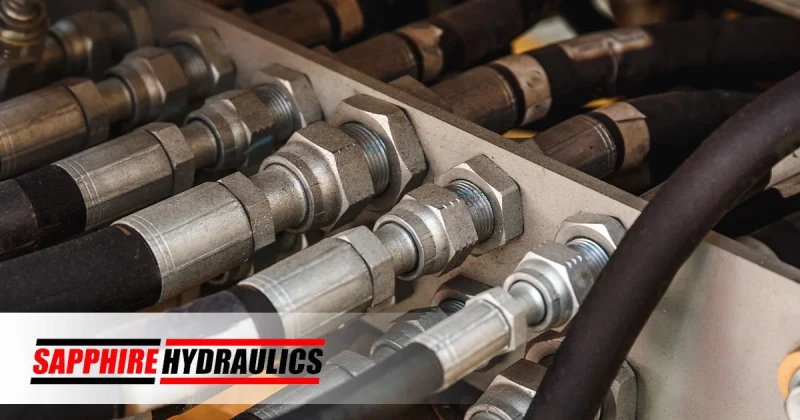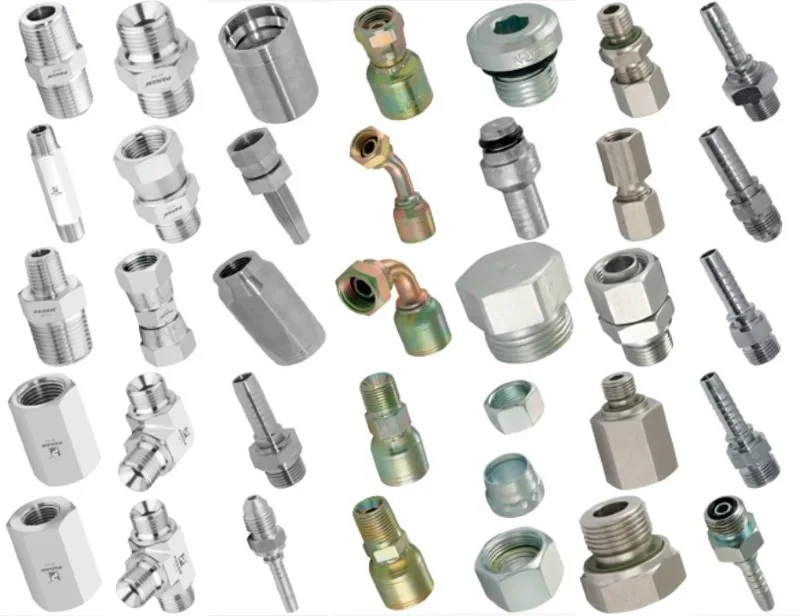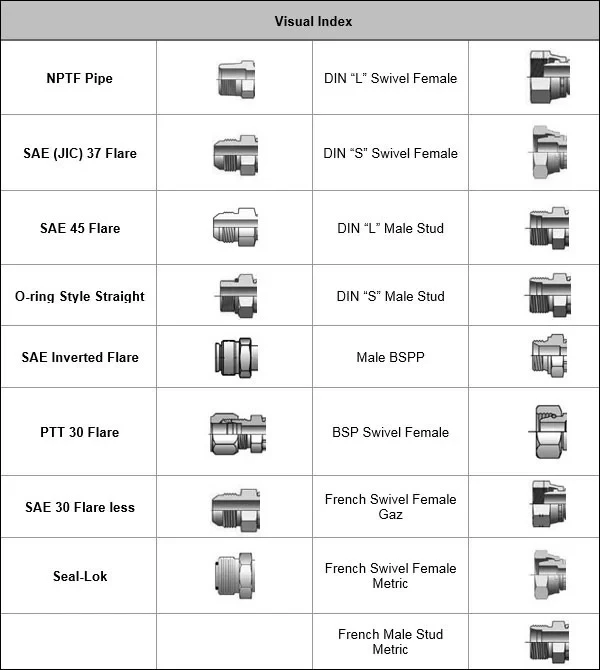July 14, 2020

How to Identify the Correct Hydraulic Hose Fittings
When you have a worn hydraulic hose fitting, you'll have to identify exactly which type you have so you know what to order from your supplier. If you've written all these connectors down somewhere, you'll be ahead of the game, and won't have any difficulty. If you aren't really sure what type of connector you need, you'll just have to determine it the old-fashioned way, and that involves some observation and some measuring.
Why are There so Many Different Types of Hydraulic Fittings?
While there might be hundreds if not thousands of hydraulic fittings and connectors, they all boil down to
three basic types. These three types are either metal seal, soft seal, or tapered thread connectors. No matter which of these types of fittings yours belongs to, it will be required to satisfy two conditions: it must seal and it must hold.
In some cases, the same mechanism can fulfill both functions, and in other cases, two different parts of the same mechanism will handle the necessary functions. Tapered pipe connectors are cut on a taper with a pipe's diameter, and it changes along the entire threaded portion of a pipe, in order to make the connection tighter. These types of fittings require a sealer, so you can be sure there will be no leakage around the fitting, and this is usually accomplished with a chemical sealant or a tape sealant.
While it might be difficult to orient the tapered pipe threads correctly, it's very important to do so, because a poor seal might result in leakage when pressure is applied. If there is a disadvantage to tapered pipe connections, it's that they must be either soldered or welded to tubes when making a connection.
Metal seal connectors were invented largely to provide an alternative to
tapered pipe thread varieties. This type uses a tapered thread combined with a machined face, to provide a seal capable of handling the typical high pressure associated with hydraulics. The thread helps to accomplish the holding power, while the sealing is managed by the machined face.
These kinds are easier to orient than a tapered connector, and they generally provide a better seal, without the need for any kind of additional sealant. However, they do still require welding or soldering to the tube. Soft seal are probably the most popular type used today, and these have an elastomeric seal that prevents leakage even under high-pressure situations.
One of the big advantages to using soft seal connectors is that they can be installed very quickly, and this is highly advantageous in industrial applications. They are also capable of resisting heavy vibrations which many systems are subject to, so they don't break down nearly as frequently.

What are the Most Common Fitting Types?
The most common types of fittings are listed below, along with a brief description of each:
- NPT/NPTF - the most commonly used type of thread in North America, these are recognizable by the tapered inner diameter and the tapered outer diameter, making the fitting self-sealing.
- BSPT (JIS-PT) - commonly known as the British Thread Type, these are standard fittings which have been internationally adopted for sealing pipe ends and making connections.
- Metric Taper - the most commonly used thread type in Europe, it is well known for its precise cylindrical inner and outer diameters.
- SAE Straight Thread - a very reliable and reusable thread type, these have excellent sealing because of the 90-durometer O-Rings.
- ISO 6149 - has a metric straight thread O-Ring port, which is very useful for diagnostic port applications.
- JIS-B2351 - largely used as hose adapters for equipment designed in Japan or Korea, these usually have BSP threads
- DIN Metric - DIN is the German Industrial Standard, and these are popular throughout Germany and much of Europe
- BSPP (JIS-PF) - JIS stands for Japanese Industrial Standards, and these BSPP connectors follow the standard British thread dimensions
- 4-Bolt Flange - there are a number of different types of 4-bolt flange options, either for normal duty or heavy duty
What are the Most Common Hydraulic Connections?
Given the fact that
industrial equipment and
machines are designed and produced by manufacturers all over the world, it's not surprising that there are countless different types of fittings and adapters. This enormous array of fittings makes use of a number of different sealing methods and thread forms, and while many of these would appear to look the same or at least very similar, it's not that difficult to accurately identify exactly which type it really is. The most common types of fittings are shown below, and these may be used in particular countries of the world, or by manufacturers everywhere on an individual continent.
- 37 degree flare
- 30 degree flare (metric)
- 45 degree flare
- 24 degree flareless (SAE)
- 24 degree flareless (DIN)
- 30 degree flare (BSPP)
- O-Ring Face Seal (ORFS)
- 60 degree NPSM Swivel
- 60 degree Cone (BSPP)
- 60 degree Cone (Metric)
To determine the type you're actually working with, there's a simple four-step process involved. First of all, you need to figure out whether it's a permanent or reusable type, and the permanent fittings will be those which are crimped. These are easier and quicker to attach than reusable fittings are, and that makes them ideal for applications in the fluid power industry.
Next you need to identify the port connections before you attempt to install a hose or tube assembly, and those port connections are the ones listed above. Then you need to identify the particular sealing method, and this will generally be an automated angle, tapered threads, or an O-ring. After having determined the sealing method, you have to use a seat gauge in order to determine the seat angle.
The last thing you need to do is measure the thread, and this will call for the use of calipers. By determining the number of threads per inch on both the outside diameter and the inside diameter, you'll be able to get an accurate reading of the thread size. Now that you know exactly which kind you're working with, it will be fairly easy for you to call a supplier and order that precise connector.

High-Quality Fittings and Connections From Sapphire Hydraulics
If you're still not sure of which kind of fittings and connections you need for your equipment, we can help you.
Contact us at Sapphire Hydraulics so we can provide you with the precise fitting for your needs. Keep us in mind for any customized equipment you might need to have designed and manufactured, as well as whenever you might need repairs to your hydraulic hoses or hydraulic cylinders.
 24 hour on-site hydraulic repair, replacement, hose & fitting services.
24 hour on-site hydraulic repair, replacement, hose & fitting services.


